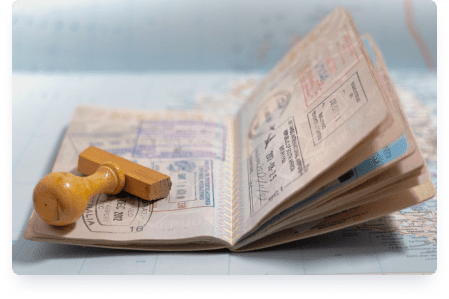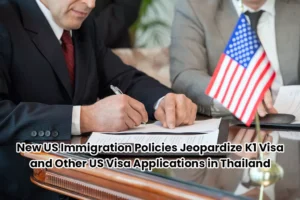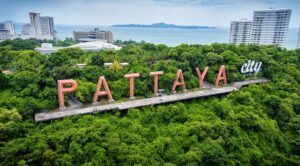If you’ve filed an I-129F petition for a fiancé(e) visa, you’re likely eager to reunite with your loved one. One burning question that often preoccupies petitioners is, “How long does it take for the I-129F to be approved?” In this article, we’ll break down the process, shedding light on the various stages and providing realistic timelines to help manage expectations.
Understanding the I-129F Petition
The I-129F, officially known as the Petition for Alien Fiancé(e), is a critical step in bringing your fiancé(e) to the United States for marriage. The approval of this petition sets the wheels in motion for the subsequent K-1 visa application process. However, patience is key as several factors can influence the timeline.
Filing an I-129F petition involves submitting a comprehensive set of documents and information to the United States Citizenship and Immigration Services (USCIS). Here are the specific requirements for filing an I-129F petition:
1. Eligibility Criteria
- The petitioner must be a U.S. citizen.
- Both the petitioner and the foreign fiancé(e) must be legally free to marry.
- The couple must have met in person within the last two years unless a waiver is granted based on religious or cultural reasons or extreme hardship.
2. Form I-129F, Petition for Alien Fiancé(e)
- The petitioner must accurately complete and sign Form I-129F.
- The form is available for download on the official USCIS website.
3. Supporting Documents
- A copy of the petitioner’s valid U.S. passport or birth certificate to establish U.S. citizenship.
- Passport-style photos of both the petitioner and the foreign fiancé(e).
- Evidence of the in-person meeting within the last two years, such as photographs, airline tickets, hotel receipts, or other documents that demonstrate the relationship.
4. Proof of Legal Termination of Previous Marriages (if applicable)
If either the petitioner or the foreign fiancé(e) was previously married, provide evidence of the legal termination of the previous marriage, such as divorce decrees or death certificates.
5. Intent to Marry
A statement from both the petitioner and the foreign fiancé(e) expressing their intent to marry within 90 days of the foreign fiancé(e) entering the U.S. on a K-1 visa.
6. Form G-325A, Biographic Information (for both the petitioner and the foreign fiancé(e))
- This form includes personal information such as addresses, employment history, and other biographical details.
7. Filing Fee
- Include the required filing fee with the petition. The fee is subject to change, so check the USCIS website for the most up-to-date information.
8. Additional Supporting Evidence
- Any additional evidence that demonstrates the legitimacy of the relationship, such as letters of intent to marry, communication records, or joint financial documents.
9. Translation of Documents (if not in English)
- If any document is not in English, provide a certified translation.
10. Form I-134, Affidavit of Support (from the petitioner)
- This form is required to demonstrate that the petitioner has the financial means to support the foreign fiancé(e) during their initial period in the U.S.
11. Filing Location
- Check the USCIS website for the correct filing location based on the petitioner’s place of residence.
It’s essential to thoroughly review the USCIS guidelines and requirements before filing the I-129F petition to ensure all necessary documents are included and the information is accurate. Additionally, keep in mind that USCIS may issue a Request for Evidence (RFE) if more information is needed, so be prepared to respond promptly to any such requests.
USCIS Processing Times
The United States Citizenship and Immigration Services (USCIS) is responsible for processing I-129F petitions. The processing times can vary based on factors such as workload, staffing, and changes in immigration policies. On average, as of the last available data, the USCIS processing time for the I-129F petition is approximately 5 to 7 months.
Filing the Petition
The journey begins with the submission of the I-129F petition. Ensure that all required documents are accurately filled out and attached to avoid delays. Once submitted, USCIS will conduct a preliminary review to ensure that the petition is complete and meets the necessary criteria.
Request for Evidence (RFE)
In some cases, USCIS may issue a Request for Evidence (RFE) if additional information or clarification is needed. Responding promptly and thoroughly to an RFE is crucial in preventing further delays. It’s essential to keep communication lines open and provide the requested documentation as accurately as possible.
Approval and NVC Processing
Upon approval by USCIS, the petition is forwarded to the National Visa Center (NVC). The NVC is responsible for assigning a case number and forwarding the case to the U.S. Embassy or Consulate in the petitioner’s fiancé(e)’s home country. The NVC processing time can take an additional 1 to 2 months.
Consulate Interview
The next step involves scheduling and attending a visa interview at the U.S. Embassy or Consulate. The interview aims to verify the legitimacy of the relationship and assess the eligibility of the fiancé(e) for a K-1 visa. The waiting time for an interview appointment varies by location but generally falls within a few weeks to a couple of months.
Visa Issuance
If the interview is successful, and the visa is approved, the fiancé(e) will receive the visa packet. The final step is to enter the U.S. within the visa’s validity period, usually within six months. Upon arrival, the couple has 90 days to get married.
Factors Influencing Timelines
While the average processing times provide a general guideline, several factors can influence the duration of the I-129F approval process:
1. Country-Specific Considerations: The processing time can vary depending on the U.S. Embassy or Consulate’s workload in the fiancé(e)’s home country.
2. Seasonal Variations: USCIS may experience fluctuations in workload based on seasonal patterns, affecting processing times.
3. Pandemic Impact: External factors, such as the ongoing global pandemic, can impact government operations and lead to delays.
Conclusion
While navigating the I-129F approval process can be challenging, understanding the various stages and potential delays is crucial for managing expectations. Patience, meticulous preparation, and timely responses to any requests for additional information are key to a smoother process. Remember, each case is unique, and timelines may vary, but staying informed will help alleviate some of the uncertainties associated with the journey to reuniting with your fiancé(e).
Contact Siam Legal
 | Ken Graham US Immigration Attorney Partner, Siam Legal International |
 | Natdaphon Luengsawang Senior US Visa Consultant Siam Legal International |
LIVE SUPPORT
 CALLCall (702) 799 9719 |  CHATChat with our representative | |
| From US: Sunday – Friday 5:00 PM – 7:00 AM (New York time) 2:00 PM – 4:00 AM (Los Angeles time) From Thailand: Monday – Friday | ||







































